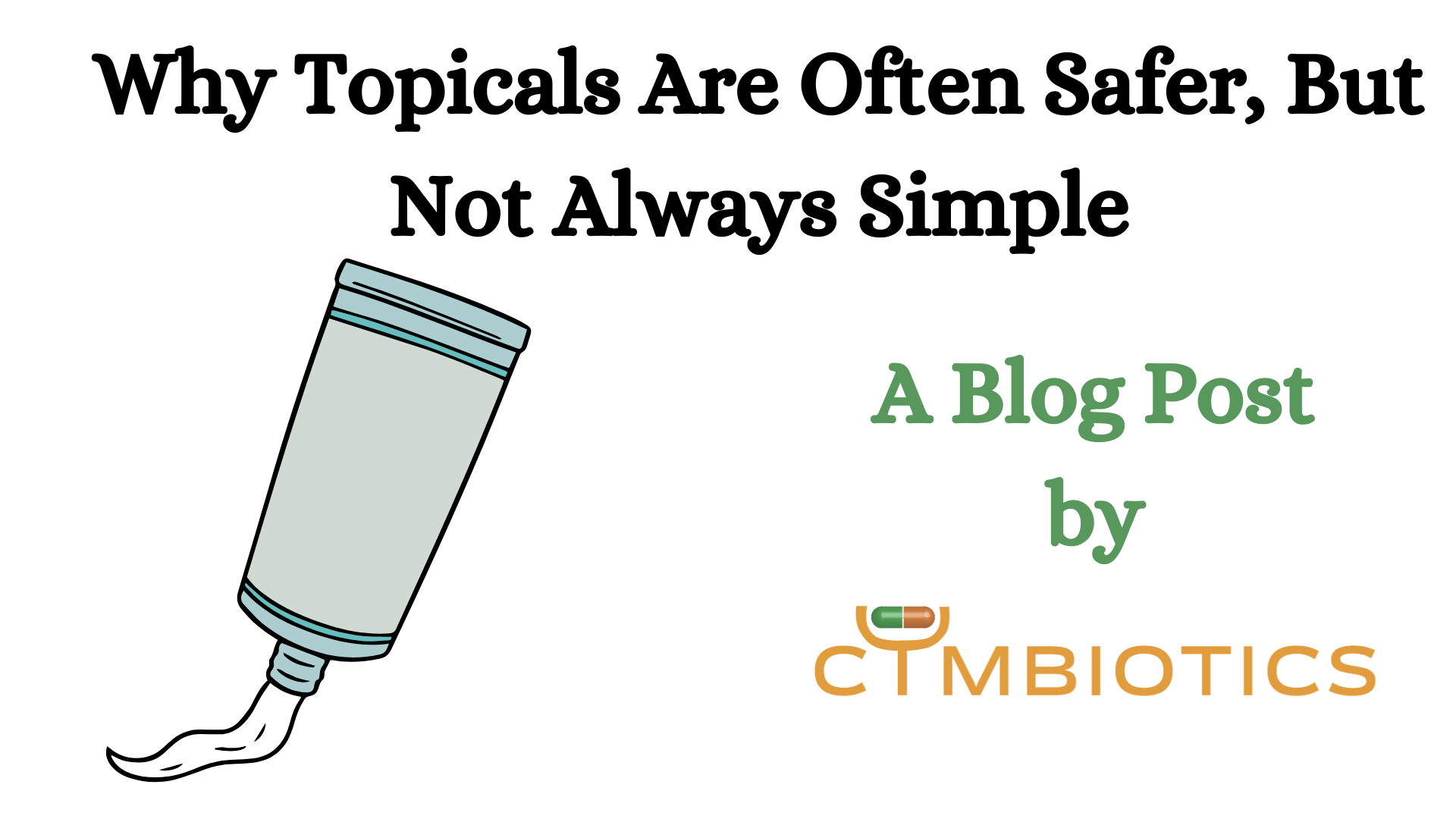Topical formulations, creams, gels, lotions, ointments, and patches have long been perceived as the safer cousins of oral or injectable medications. After all, they sit on the surface, right? But beneath their gentle appearance lies an elegant complexity of science, skin physiology, and formulation design.
Let’s explore why topicals are often safer, but not always simple.
Why Topicals Feel Safer
Topicals work locally, meaning the active ingredients mostly act at the site of application whether it’s a rash, inflammation, or joint pain; without being absorbed into the bloodstream in large quantities.
Because of this, they often:
- Reduce systemic side effects (like those seen with oral NSAIDs or antibiotics)
- Avoid first-pass metabolism by the liver
- Are easier to self-administer and discontinue if reactions occur
- Are ideal for sensitive populations, including children and elderly patients
But They Aren’t Always “Simple”
Despite their reputation for being milder, topical products are pharmaceutically sophisticated systems. The complexity arises from:
1. Skin Barrier Challenges
The stratum corneum is remarkably efficient at keeping things out. To deliver actives through or across the skin:
- The molecule must be small, lipophilic, and chemically stable
- Formulations often include penetration enhancers, some of which can irritate the skin if not balanced properly
2. Variable Absorption
Factors like:
- Skin hydration, thickness, and pH
- Inflammation, wounds, or broken barrier
- Age and body site (face vs. soles) can drastically change how much drug is absorbed. This makes consistent efficacy harder to predict.
3. Formulation Matters
Even small tweaks in a base (say, from gel to cream) can:
- Change the release rate of an active
- Influence patient comfort and adherence
- Affect stability and shelf life
For example, Cymbiotics’ Cetosome™ technology is a patented approach that addresses some of these very issues, enhancing penetration without irritation, improving stability, and supporting skin barrier repair.
When Topicals Aren’t Safer
Topicals are not immune to causing harm:
- Steroid creams overused can cause skin thinning, acne, and even hormonal effects
- Photosensitizing agents may make skin more vulnerable to UV rays
- Allergic reactions to preservatives, perfumes, or actives are common
Also, misuse of medicated topicals (like antifungals, corticosteroids, or antibiotics) may lead to:
- Resistance (especially in acne treatments)
- Delayed diagnosis (if a condition is masked or misinterpreted)
- Barrier damage from improper layering or mixing
The Takeaway
Topicals have earned their place in modern dermatology for a reason, they are targeted, versatile, and often gentler than systemic routes. But they are not one-size-fits-all. The formulation science behind them is just as rigorous and demanding, especially when delivering actives across a barrier that is designed to keep them out.
Understanding this helps both users and developers approach topical therapy with a mindset that respects both its safety and its complexity.
Further Reading
- Barry BW. (2001). Novel mechanisms and devices to enable successful transdermal drug delivery– https://pubmed.ncbi.nlm.nih.gov/11500256/
- Prausnitz MR, Langer R. (2008). Transdermal drug delivery– https://pubmed.ncbi.nlm.nih.gov/18997767/
- Benson HAE. (2005). Transdermal drug delivery: penetration enhancement techniques–https://pubmed.ncbi.nlm.nih.gov/16305405/

